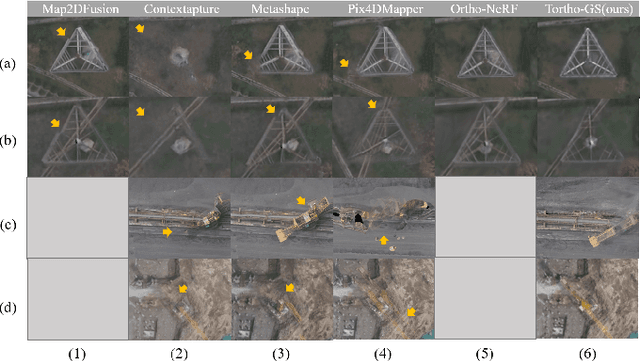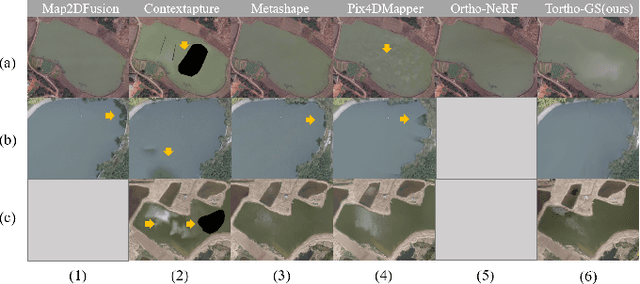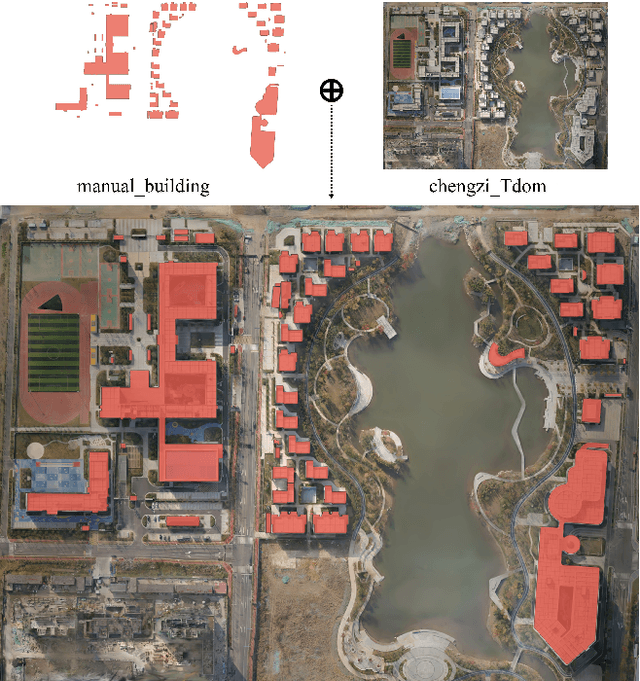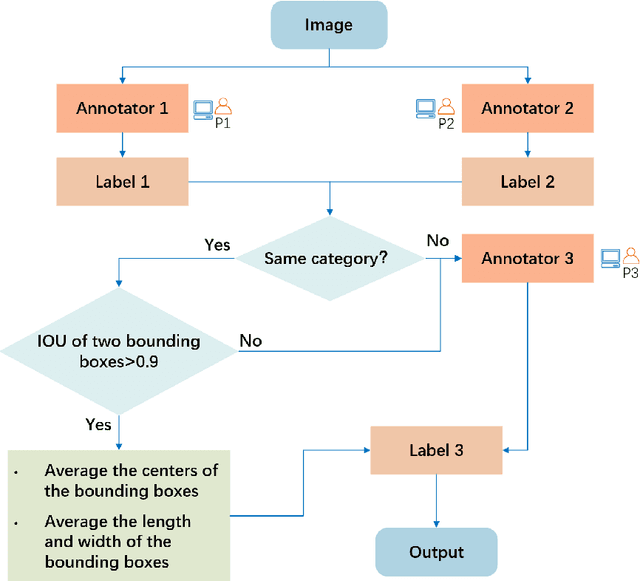Hong Xie
Advancing and Benchmarking Personalized Tool Invocation for LLMs
May 07, 2025Abstract:Tool invocation is a crucial mechanism for extending the capabilities of Large Language Models (LLMs) and has recently garnered significant attention. It enables LLMs to solve complex problems through tool calls while accessing up-to-date world knowledge. However, existing work primarily focuses on the fundamental ability of LLMs to invoke tools for problem-solving, without considering personalized constraints in tool invocation. In this work, we introduce the concept of Personalized Tool Invocation and define two key tasks: Tool Preference and Profile-dependent Query. Tool Preference addresses user preferences when selecting among functionally similar tools, while Profile-dependent Query considers cases where a user query lacks certain tool parameters, requiring the model to infer them from the user profile. To tackle these challenges, we propose PTool, a data synthesis framework designed for personalized tool invocation. Additionally, we construct \textbf{PTBench}, the first benchmark for evaluating personalized tool invocation. We then fine-tune various open-source models, demonstrating the effectiveness of our framework and providing valuable insights. Our benchmark is public at https://github.com/hyfshadow/PTBench.
CasualHDRSplat: Robust High Dynamic Range 3D Gaussian Splatting from Casually Captured Videos
Apr 24, 2025Abstract:Recently, photo-realistic novel view synthesis from multi-view images, such as neural radiance field (NeRF) and 3D Gaussian Splatting (3DGS), have garnered widespread attention due to their superior performance. However, most works rely on low dynamic range (LDR) images, which limits the capturing of richer scene details. Some prior works have focused on high dynamic range (HDR) scene reconstruction, typically require capturing of multi-view sharp images with different exposure times at fixed camera positions during exposure times, which is time-consuming and challenging in practice. For a more flexible data acquisition, we propose a one-stage method: \textbf{CasualHDRSplat} to easily and robustly reconstruct the 3D HDR scene from casually captured videos with auto-exposure enabled, even in the presence of severe motion blur and varying unknown exposure time. \textbf{CasualHDRSplat} contains a unified differentiable physical imaging model which first applies continuous-time trajectory constraint to imaging process so that we can jointly optimize exposure time, camera response function (CRF), camera poses, and sharp 3D HDR scene. Extensive experiments demonstrate that our approach outperforms existing methods in terms of robustness and rendering quality. Our source code will be available at https://github.com/WU-CVGL/CasualHDRSplat
General Time-series Model for Universal Knowledge Representation of Multivariate Time-Series data
Feb 05, 2025



Abstract:Universal knowledge representation is a central problem for multivariate time series(MTS) foundation models and yet remains open. This paper investigates this problem from the first principle and it makes four folds of contributions. First, a new empirical finding is revealed: time series with different time granularities (or corresponding frequency resolutions) exhibit distinct joint distributions in the frequency domain. This implies a crucial aspect of learning universal knowledge, one that has been overlooked by previous studies. Second, a novel Fourier knowledge attention mechanism is proposed to enable learning time granularity-aware representations from both the temporal and frequency domains. Third, an autoregressive blank infilling pre-training framework is incorporated to time series analysis for the first time, leading to a generative tasks agnostic pre-training strategy. To this end, we develop the General Time-series Model (GTM), a unified MTS foundation model that addresses the limitation of contemporary time series models, which often require token, pre-training, or model-level customizations for downstream tasks adaption. Fourth, extensive experiments show that GTM outperforms state-of-the-art (SOTA) methods across all generative tasks, including long-term forecasting, anomaly detection, and imputation.
Tortho-Gaussian: Splatting True Digital Orthophoto Maps
Nov 29, 2024



Abstract:True Digital Orthophoto Maps (TDOMs) are essential products for digital twins and Geographic Information Systems (GIS). Traditionally, TDOM generation involves a complex set of traditional photogrammetric process, which may deteriorate due to various challenges, including inaccurate Digital Surface Model (DSM), degenerated occlusion detections, and visual artifacts in weak texture regions and reflective surfaces, etc. To address these challenges, we introduce TOrtho-Gaussian, a novel method inspired by 3D Gaussian Splatting (3DGS) that generates TDOMs through orthogonal splatting of optimized anisotropic Gaussian kernel. More specifically, we first simplify the orthophoto generation by orthographically splatting the Gaussian kernels onto 2D image planes, formulating a geometrically elegant solution that avoids the need for explicit DSM and occlusion detection. Second, to produce TDOM of large-scale area, a divide-and-conquer strategy is adopted to optimize memory usage and time efficiency of training and rendering for 3DGS. Lastly, we design a fully anisotropic Gaussian kernel that adapts to the varying characteristics of different regions, particularly improving the rendering quality of reflective surfaces and slender structures. Extensive experimental evaluations demonstrate that our method outperforms existing commercial software in several aspects, including the accuracy of building boundaries, the visual quality of low-texture regions and building facades. These results underscore the potential of our approach for large-scale urban scene reconstruction, offering a robust alternative for enhancing TDOM quality and scalability.
Micro-Structures Graph-Based Point Cloud Registration for Balancing Efficiency and Accuracy
Oct 29, 2024Abstract:Point Cloud Registration (PCR) is a fundamental and significant issue in photogrammetry and remote sensing, aiming to seek the optimal rigid transformation between sets of points. Achieving efficient and precise PCR poses a considerable challenge. We propose a novel micro-structures graph-based global point cloud registration method. The overall method is comprised of two stages. 1) Coarse registration (CR): We develop a graph incorporating micro-structures, employing an efficient graph-based hierarchical strategy to remove outliers for obtaining the maximal consensus set. We propose a robust GNC-Welsch estimator for optimization derived from a robust estimator to the outlier process in the Lie algebra space, achieving fast and robust alignment. 2) Fine registration (FR): To refine local alignment further, we use the octree approach to adaptive search plane features in the micro-structures. By minimizing the distance from the point-to-plane, we can obtain a more precise local alignment, and the process will also be addressed effectively by being treated as a planar adjustment algorithm combined with Anderson accelerated optimization (PA-AA). After extensive experiments on real data, our proposed method performs well on the 3DMatch and ETH datasets compared to the most advanced methods, achieving higher accuracy metrics and reducing the time cost by at least one-third.
BFA-YOLO: Balanced multiscale object detection network for multi-view building facade attachments detection
Sep 06, 2024



Abstract:Detection of building facade attachments such as doors, windows, balconies, air conditioner units, billboards, and glass curtain walls plays a pivotal role in numerous applications. Building facade attachments detection aids in vbuilding information modeling (BIM) construction and meeting Level of Detail 3 (LOD3) standards. Yet, it faces challenges like uneven object distribution, small object detection difficulty, and background interference. To counter these, we propose BFA-YOLO, a model for detecting facade attachments in multi-view images. BFA-YOLO incorporates three novel innovations: the Feature Balanced Spindle Module (FBSM) for addressing uneven distribution, the Target Dynamic Alignment Task Detection Head (TDATH) aimed at improving small object detection, and the Position Memory Enhanced Self-Attention Mechanism (PMESA) to combat background interference, with each component specifically designed to solve its corresponding challenge. Detection efficacy of deep network models deeply depends on the dataset's characteristics. Existing open source datasets related to building facades are limited by their single perspective, small image pool, and incomplete category coverage. We propose a novel method for building facade attachments detection dataset construction and construct the BFA-3D dataset for facade attachments detection. The BFA-3D dataset features multi-view, accurate labels, diverse categories, and detailed classification. BFA-YOLO surpasses YOLOv8 by 1.8% and 2.9% in mAP@0.5 on the multi-view BFA-3D and street-view Facade-WHU datasets, respectively. These results underscore BFA-YOLO's superior performance in detecting facade attachments.
Contextual Bandit with Herding Effects: Algorithms and Recommendation Applications
Aug 26, 2024Abstract:Contextual bandits serve as a fundamental algorithmic framework for optimizing recommendation decisions online. Though extensive attention has been paid to tailoring contextual bandits for recommendation applications, the "herding effects" in user feedback have been ignored. These herding effects bias user feedback toward historical ratings, breaking down the assumption of unbiased feedback inherent in contextual bandits. This paper develops a novel variant of the contextual bandit that is tailored to address the feedback bias caused by the herding effects. A user feedback model is formulated to capture this feedback bias. We design the TS-Conf (Thompson Sampling under Conformity) algorithm, which employs posterior sampling to balance the exploration and exploitation tradeoff. We prove an upper bound for the regret of the algorithm, revealing the impact of herding effects on learning speed. Extensive experiments on datasets demonstrate that TS-Conf outperforms four benchmark algorithms. Analysis reveals that TS-Conf effectively mitigates the negative impact of herding effects, resulting in faster learning and improved recommendation accuracy.
Multi-agent Multi-armed Bandits with Stochastic Sharable Arm Capacities
Aug 20, 2024



Abstract:Motivated by distributed selection problems, we formulate a new variant of multi-player multi-armed bandit (MAB) model, which captures stochastic arrival of requests to each arm, as well as the policy of allocating requests to players. The challenge is how to design a distributed learning algorithm such that players select arms according to the optimal arm pulling profile (an arm pulling profile prescribes the number of players at each arm) without communicating to each other. We first design a greedy algorithm, which locates one of the optimal arm pulling profiles with a polynomial computational complexity. We also design an iterative distributed algorithm for players to commit to an optimal arm pulling profile with a constant number of rounds in expectation. We apply the explore then commit (ETC) framework to address the online setting when model parameters are unknown. We design an exploration strategy for players to estimate the optimal arm pulling profile. Since such estimates can be different across different players, it is challenging for players to commit. We then design an iterative distributed algorithm, which guarantees that players can arrive at a consensus on the optimal arm pulling profile in only M rounds. We conduct experiments to validate our algorithm.
Analytical and Empirical Study of Herding Effects in Recommendation Systems
Aug 20, 2024



Abstract:Online rating systems are often used in numerous web or mobile applications, e.g., Amazon and TripAdvisor, to assess the ground-truth quality of products. Due to herding effects, the aggregation of historical ratings (or historical collective opinion) can significantly influence subsequent ratings, leading to misleading and erroneous assessments. We study how to manage product ratings via rating aggregation rules and shortlisted representative reviews, for the purpose of correcting the assessment error. We first develop a mathematical model to characterize important factors of herding effects in product ratings. We then identify sufficient conditions (via the stochastic approximation theory), under which the historical collective opinion converges to the ground-truth collective opinion of the whole user population. These conditions identify a class of rating aggregation rules and review selection mechanisms that can reveal the ground-truth product quality. We also quantify the speed of convergence (via the martingale theory), which reflects the efficiency of rating aggregation rules and review selection mechanisms. We prove that the herding effects slow down the speed of convergence while an accurate review selection mechanism can speed it up. We also study the speed of convergence numerically and reveal trade-offs in selecting rating aggregation rules and review selection mechanisms. To show the utility of our framework, we design a maximum likelihood algorithm to infer model parameters from ratings, and conduct experiments on rating datasets from Amazon and TripAdvisor. We show that proper recency aware rating aggregation rules can improve the speed of convergence in Amazon and TripAdvisor by 41% and 62% respectively.
Foundations and Frontiers of Graph Learning Theory
Jul 03, 2024


Abstract:Recent advancements in graph learning have revolutionized the way to understand and analyze data with complex structures. Notably, Graph Neural Networks (GNNs), i.e. neural network architectures designed for learning graph representations, have become a popular paradigm. With these models being usually characterized by intuition-driven design or highly intricate components, placing them within the theoretical analysis framework to distill the core concepts, helps understand the key principles that drive the functionality better and guide further development. Given this surge in interest, this article provides a comprehensive summary of the theoretical foundations and breakthroughs concerning the approximation and learning behaviors intrinsic to prevalent graph learning models. Encompassing discussions on fundamental aspects such as expressiveness power, generalization, optimization, and unique phenomena such as over-smoothing and over-squashing, this piece delves into the theoretical foundations and frontier driving the evolution of graph learning. In addition, this article also presents several challenges and further initiates discussions on possible solutions.
 Add to Chrome
Add to Chrome Add to Firefox
Add to Firefox Add to Edge
Add to Edge